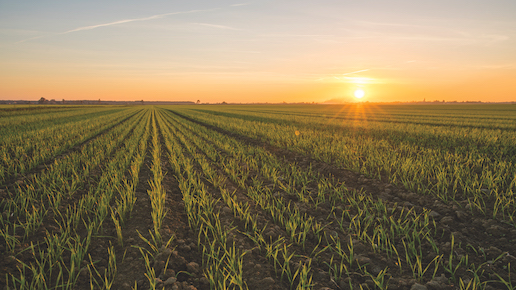By Clare Stanfield
Bruce Burnett is keeping a weather eye on the weather, so to speak. As the director of markets and weather information with Glacier FarmMedia, Burnett is watching how global weather patterns may impact grain markets for Canadian producers this fall.

“We’ve been in a La Niña for two years. We’re coming out of it now and will be in an El Niño this year,” says Burnett, referring to the oceanic phenomena that can impact weather changes around the globe. La Niña occurs when surface temperatures in the central part of the Pacific Ocean are lower than normal, causing temperatures to cool, while in an El Niño warm water is brought to the ocean surface, causing temperatures to rise.
Burnett says that because warming in the Pacific has been extremely rapid of late — that is, it can go from cool to warm quickly — this year’s El Niño could be very strong, which could mean bad news for crop-growing regions in the southern hemisphere.
“It shouldn’t affect Western Canada a lot, but it does have an impact globally” he says. That’s because by the time an El Niño arrives here in late summer, our crops are mature and less susceptible to a rise in temperature, whereas crops in southern regions will have recently emerged or be flowering; growth stages that are more prone to heat and drought stress.
Burnett is quick to point out there are no guarantees — a dreaded heat dome is always possible here — but projecting forward just now, it looks likely that nations such as Australia, India and Malaysia (a leading producer of vegetable oil) could face some production declines this year and this is already being reflected in crop forecasts.
“The International Grains Council (IGC) is forecasting that wheat production will be down significantly from the past year,” says Burnett.
For instance, Australia harvested a record 39.2 million tonnes of wheat in January this year, and the IGC predicts that will drop to 27.9 million tonnes next year. “I think that’s a conservatively high number and that it could be more like 25 million tonnes or less,” he says, adding that production declines in the country’s pulse and canola crops would be felt as well.
“If El Niño does impact those southern regions, it’s going to have an effect on the marketing year,” says Burnett. Because, as always with grain markets, it’s about the knock-on effects of production issues.
India, for example, is already a major importer of pulses and the largest oil seed consumer in the world. It’s also a pretty big producer of lentils, oilseeds and wheat, so if it faces a dryer monsoon season and production drops, India will need to increase imports to make up for that loss. And Canada grows all of that stuff.
He says that as Canadian farmers work their way through the 2023 growing season, it’s worth keeping an eye on what El Niño might be doing to grain supply in southern countries and occasionally revisit their marketing plans. “If we look out past the immediate horizon to when we harvest this year’s crop, it could have a big effect.”